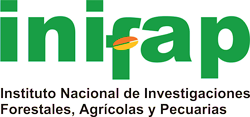Typology of cape gooseberry producers in the department of Nariño, Colombia
DOI:
https://doi.org/10.29312/remexca.v12i7.2766Keywords:
Family agriculture, Andean fruits, Statisical analysis, TypologyAbstract
For a long time, the segment of production of exotic fruits has been positioning itself as an important productive and economic alternative to traditional crops in several regions of the country. Particularly, cape gooseberry (Physalis peruviana L.) has shown a notable increase in productive areas and international trade, which consolidates it as a species with high potential in the segment of cold climate fruits. In the department of Nariño (Colombia), the introduction of the crop is relatively recent, so there is still a need to know in detail the productive and environmental conditions in which the crop is produced and the socioeconomic characteristics of the producers in the region. For this, a characterization survey was designed, applied to cape gooseberry producers in the department of Nariño between 2019 and 2020. The information obtained was subjected to multivariate factor analysis of mixed data (FAMD) and multiple correspondence analysis MCA for categorical variables and the hierarchical cluster-type analysis, through Ward’s algorithm, as a result, eight variables with discriminatory power were identified, which made up three clusters. Each group with distinctive characteristics in relation to the production area, degree of technification of the crop, use of labor and marketing strategies, among others, which give a clear specificity. With the information generated, it is expected to develop studies aimed at adjusting agronomic production models adapted to the environmental and socioeconomic conditions of growers. Additionally, the results obtained constitute a fundamental input for the orientation of policies to strengthen the regional chain.
Downloads
References
Alvarez-Sánchez, D. E.; Gómez-López, E. D. y Ordóñez-Hurtado, H. R. 2019. Tipología de fincas productoras de arveja (Pisum sativum L.) en la subregión sur de Nariño, Colombia. Ciencia y Tecnología Agropecuaria. 20(3):659-67. https://doi.org/10.21930/rcta.vol20-num3-art:1593.
Alvarez, S.; Paas, W.; Descheemaeker, K.; Tittonell, P. y Groot, J. 2014. Construcción de tipologías, una forma de manejar la diversidad de las fincas: directrices generales para humidtropics. 40 p.
Coronel-Renolfi, M. y Orduño, P. S. F. 2005. Tipificación de los sistemas productivos agropecuarios en el área de riego de santiago del estero, Argentina. Problemas del Desarrollo. Rev. Latinoam. Econ. 36(140):63-88. https://doi.org/10.22201/iiec.20078951e. 2005.140.7572.
Elias, C.; Campo, P.; Torres, C.; Díaz, I.; Sadinle, M. y Medina, J. 2018. Package ‘factoextra’. https://cran.r-project.org/web/packages/FactoClass/FactoClass.pdf. 1-34 pp.
García, C. H. y Calle, L. M. 1998. Consideraciones metodológicas para la tipificación de sistemas de producción bovina a partir de fuentes secundarias. Ciencia y Tecnología Agropecuaria. 2(2):6-15. doi: 10.21930/rcta.vol2-num2-art:166.
González-Flores, S.; Guajardo-Hernández, L. G.; Almeraya-Quintero, S. X.; Pérez-Hernández, L. M. y Sangerman-Jarquín, D. M. 2018. Tipología de productores de maíz en los municipios de Villaflores y La Trinitaria. Chiapas. Rev. Mex. Cienc. Agríc. 9(8):1763-1776. https://doi.org/10.29312/remexca.v9i8.1722.
Husson, F.; Josse, J.; Le, S. and Mazet, J. 2020. FactoMineR: multivariate exploratory data analysis and data mining. https://cran.r-project.org/web/packages/FactoMineR/index. html. 25(1):1-18.
Kassambara, A. 2017. Practical guide to principal component methods in R, PCA, (M) CA, FAMD, MFA, HCPC, factoextra. Statistical tools for high-throughput data análisis (STHDA). 1 ed. Francia. 29 p.
Kassambara, A. and Mundt, F. 2020. Factoextra: extract and visualize the results of multivariate data analyses. R. package version 1.0.7. https://cran.r-project.org/web/packages/factoextra /factoextra.pdf.
MADR (Ministerio de Agricultura y Desarrollo Rural). 2019. Dirección de cadenas agrícolas y forestales. Cadena de la uchuva. Colombia. 18 p.
Ortega, R.; Sonego, M.; Pulido, J.; Crespo, A.; Mejías, E. y Sordo, L. 2017. Métodos indirectos para la estimación de poblaciones ocultas. Rev. Españ. Salud. Públ. 91:1-9. https://www.redalyc.org/articulo.oa?id=17049838040.
Peña, D. 2002. Análisis de datos multivariantes. McGraw-Hill. 1ra. ed. España. 201-226 pp.
Wickham, H.; Romain, F.; Lionel, H. y Kirill, M. 2019. Dplyr: a grammar of data manipulation. R. package version 1.0.0.

Downloads
Published
How to Cite
Issue
Section
License
Copyright (c) 2021 Revista Mexicana de Ciencias Agrícolas

This work is licensed under a Creative Commons Attribution-NonCommercial 4.0 International License.
The authors who publish in Revista Mexicana de Ciencias Agrícolas accept the following conditions:
In accordance with copyright laws, Revista Mexicana de Ciencias Agrícolas recognizes and respects the authors’ moral right and ownership of property rights which will be transferred to the journal for dissemination in open access. Invariably, all the authors have to sign a letter of transfer of property rights and of originality of the article to Instituto Nacional de Investigaciones Forestales, Agrícolas y Pecuarias (INIFAP) [National Institute of Forestry, Agricultural and Livestock Research]. The author(s) must pay a fee for the reception of articles before proceeding to editorial review.
All the texts published by Revista Mexicana de Ciencias Agrícolas —with no exception— are distributed under a Creative Commons License Attribution-NonCommercial 4.0 International (CC BY-NC 4.0), which allows third parties to use the publication as long as the work’s authorship and its first publication in this journal are mentioned.
The author(s) can enter into independent and additional contractual agreements for the nonexclusive distribution of the version of the article published in Revista Mexicana de Ciencias Agrícolas (for example include it into an institutional repository or publish it in a book) as long as it is clearly and explicitly indicated that the work was published for the first time in Revista Mexicana de Ciencias Agrícolas.
For all the above, the authors shall send the Letter-transfer of Property Rights for the first publication duly filled in and signed by the author(s). This form must be sent as a PDF file to: revista_atm@yahoo.com.mx; cienciasagricola@inifap.gob.mx; remexca2017@gmail.
This work is licensed under a Creative Commons Attribution-Noncommercial 4.0 International license.


